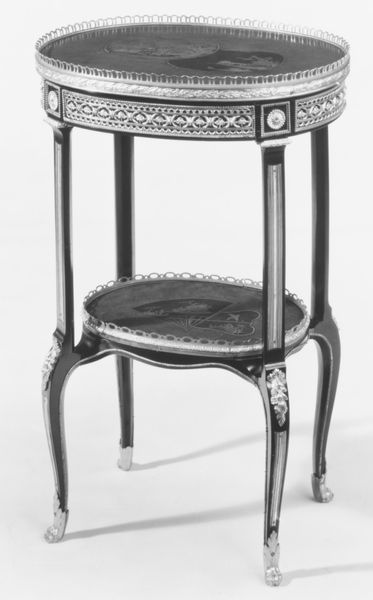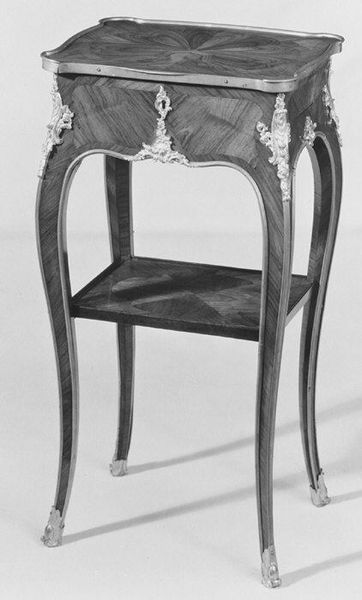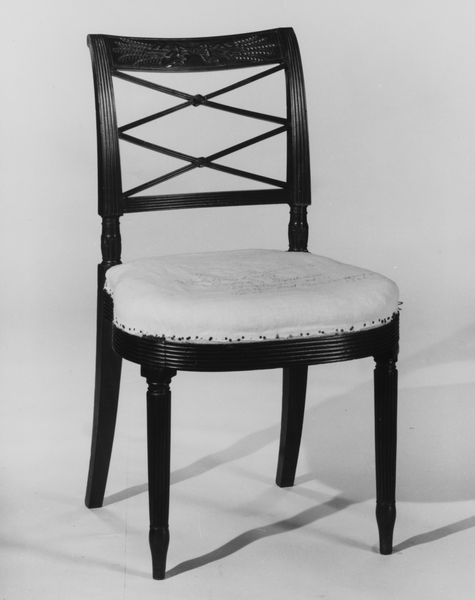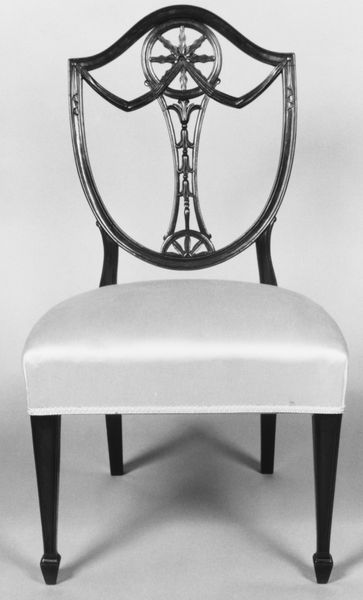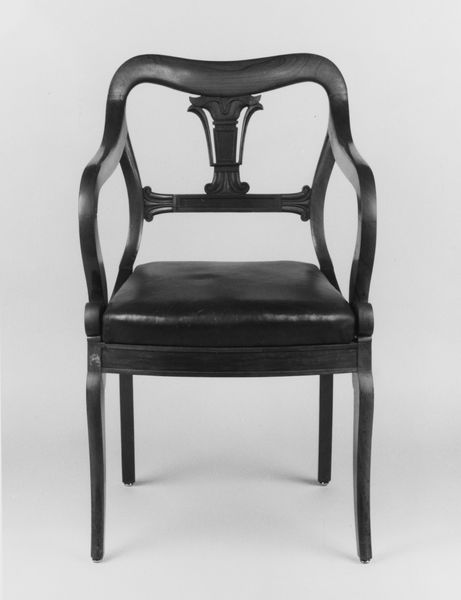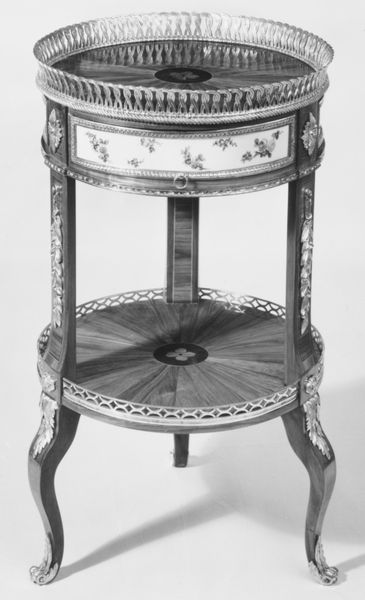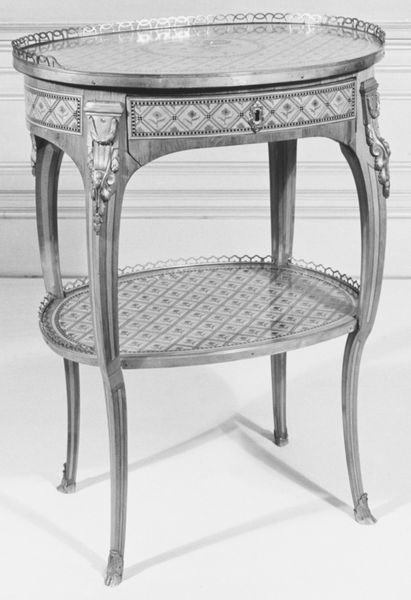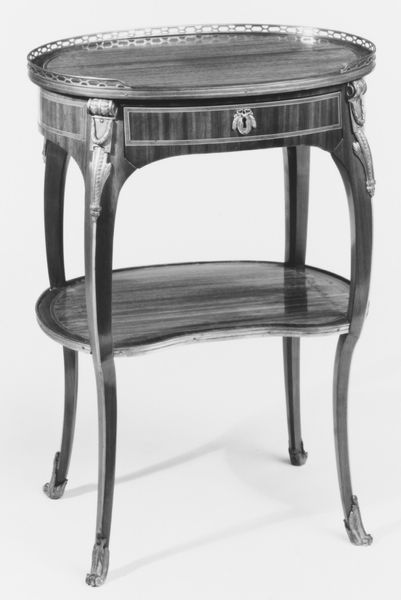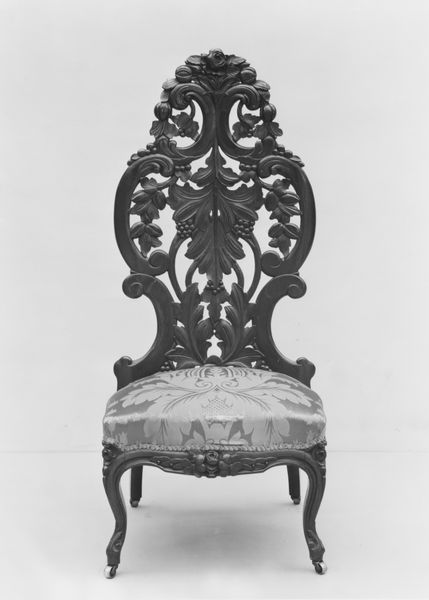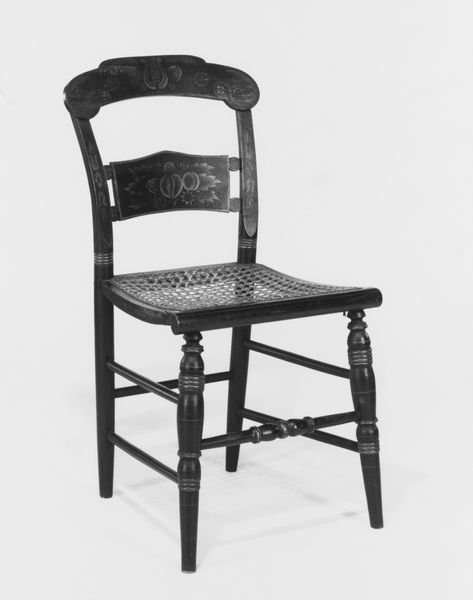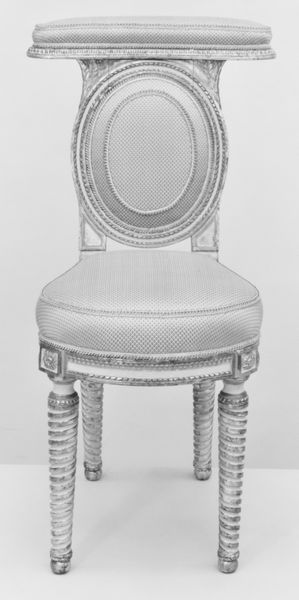
Dimensions: Height: 28 5/8 in. (72.7 cm); Diameter (of top): 14 3/4 in. (37.5 cm)
Copyright: Public Domain
Curator: Here we have a "Small circular table" crafted by Martin Carlin between 1775 and 1785. It resides in the Metropolitan Museum of Art. Editor: Its stark monochromatic palette initially strikes me. There's an undeniably severe elegance about it, amplified by the recurring circular motifs throughout its design. Curator: The table’s elegant form exemplifies Rococo style within the decorative arts. The structural integrity is achieved by joining wood and metal into an harmonious structural piece. Consider the ormolu embellishments against the dark lacquer. They create a visual rhythm, almost like a musical score. Editor: I find myself pondering the craftsman’s intent— Carlin’s, perhaps. What socioeconomic factors afforded the materials and skill? How would such an item have influenced the owner’s presentation of self? A lacquered object speaks of global trade and French luxury at once. Curator: Exactly! And within the decorative framework, there is balance between horizontal surfaces and curvilinear leg forms; an arrangement designed to meet not only utility concerns but expectations tied to a visual experience where beauty supersedes comfort. Editor: Still, comfort certainly existed within such refined circles, albeit tempered with prescribed etiquette, wouldn't you agree? Did Carlin consider the ergonomics of how such a table would be interacted with? Perhaps he toiled meticulously but may have never witnessed anyone making conversation, drinking tea beside his beautiful functional object? Curator: Speculating about intended usage and designer’s intentions is helpful for further reflection about purpose while recognizing beauty in abstract principles behind composition of form across materials: function marries pure abstraction creating object-beauty where aesthetic delight lives independent from daily interaction Editor: Well, regardless of unseen interactions or designer intentions, these subtle object interactions serve as potent relics illuminating class constructs while displaying refined art and artisanship within a specific historical frame and beyond—inviting conversations across generations around value, presentation and aesthetic merit both historically and today Curator: Indeed! Editor: Yes.
Comments
No comments
Be the first to comment and join the conversation on the ultimate creative platform.
